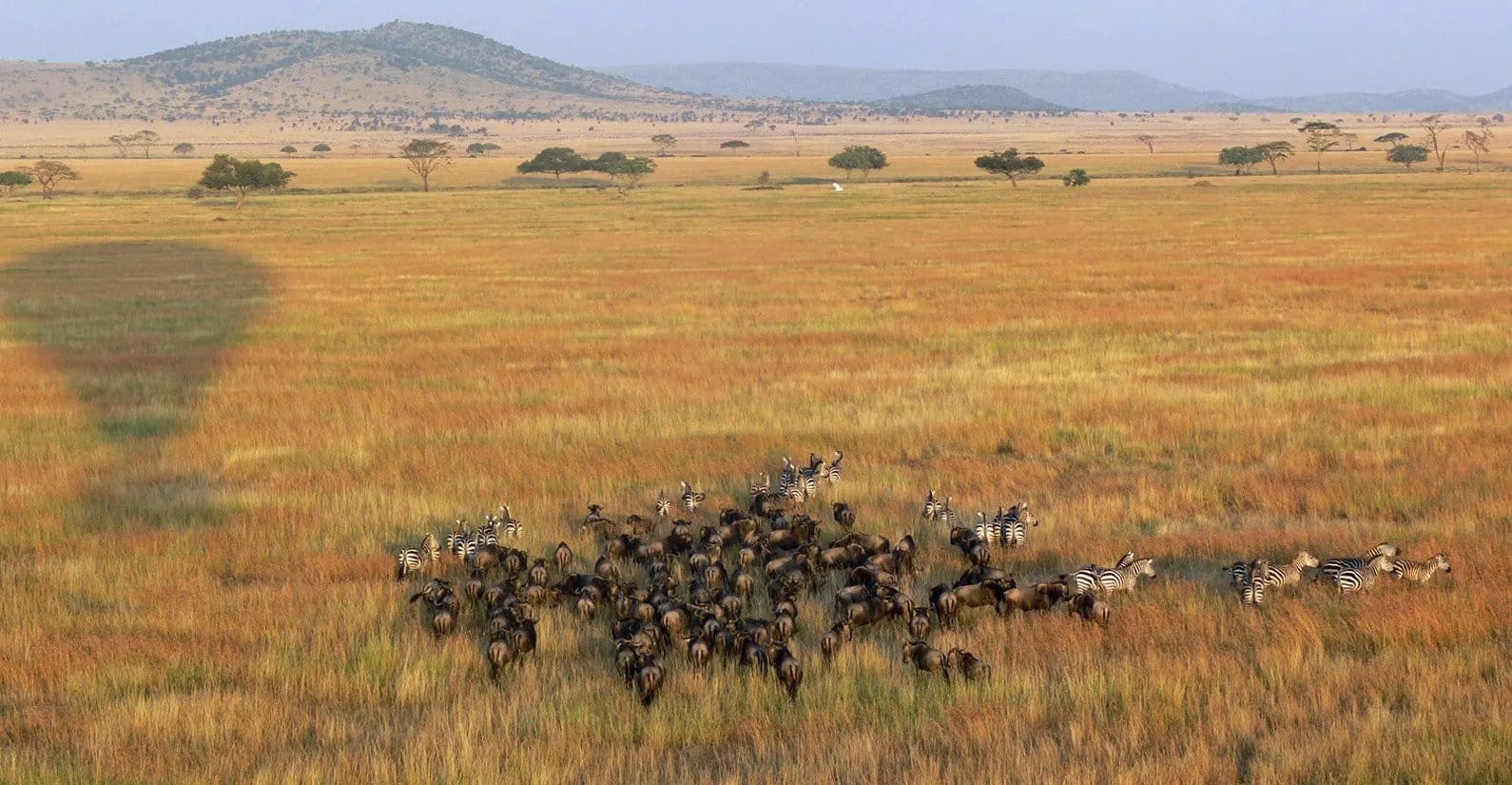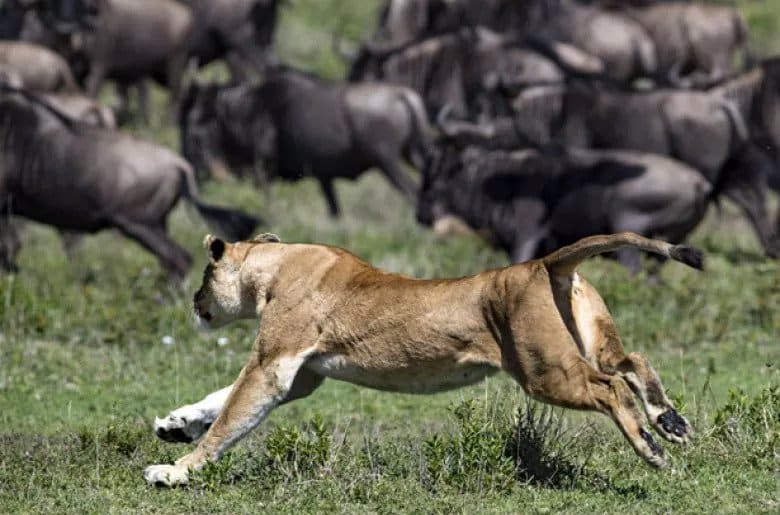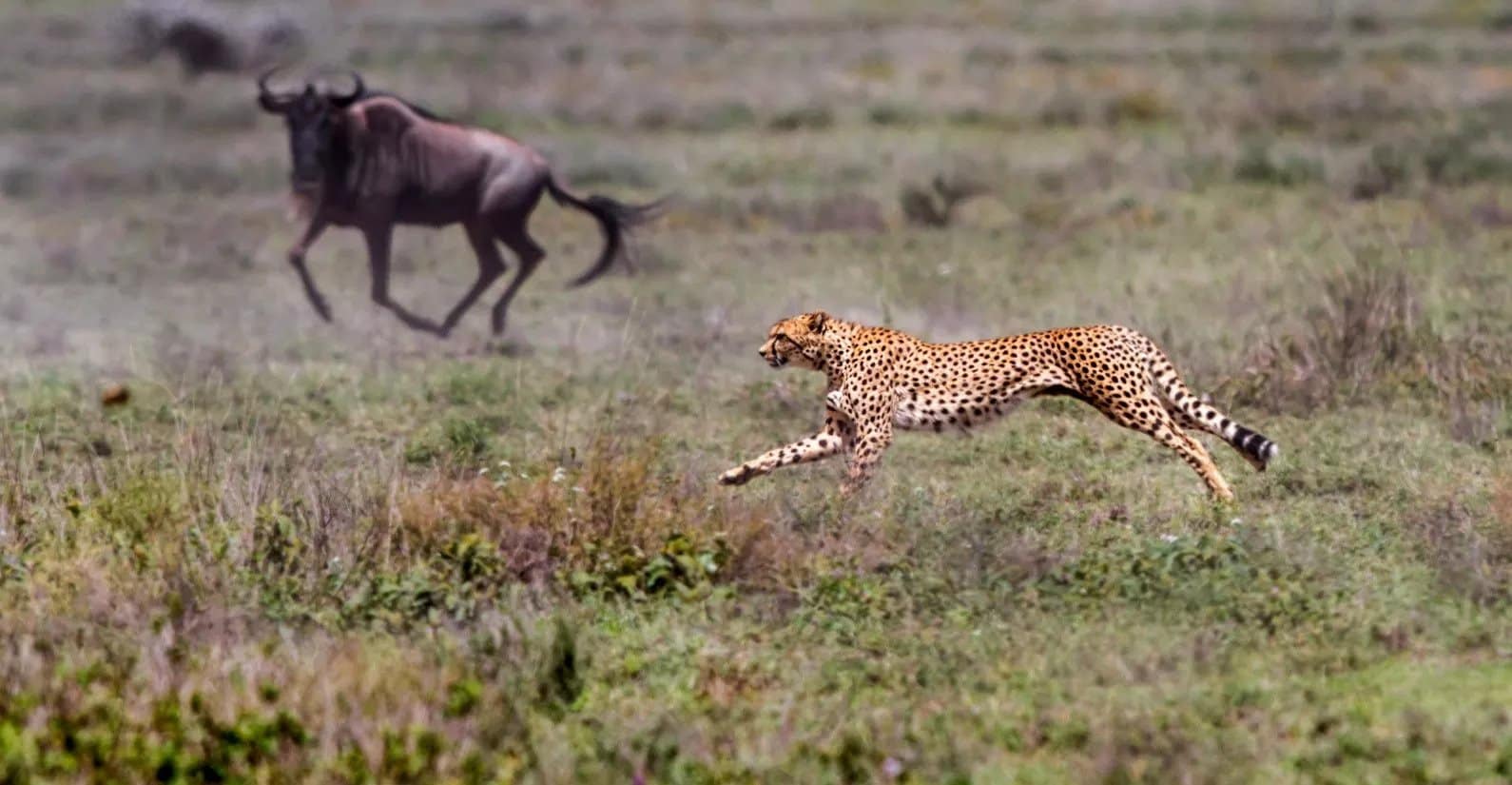Wildlife
Written by Joseph Cameron
If there is one thing that Africa is most famous for, it has to be the annual wildebeest migration – one of the seven wonders of the natural world. Just picture the sight, tens of thousands of huge horned antelopes trampling the ground in formation, grunting and snorting as they pass. Ker & Downey® Africa tries to offer guests an unforgettable experience, putting you at the heart of the action. That is why we have developed a series of itineraries that are timed to ensure that our guests can witness this truly wild annual event.
To give you a better idea of what to expect when you book one of our trips that includes the wildebeest migration, we thought we would share the answers to some of the most frequently asked questions about this impressive natural phenomenon.
Africa’s wildebeest migration is one of the world’s most spectacular events – hundreds of thousands of untamed wildebeest, antelope and zebra migrate clockwise across the Serengeti-Maasai Mara savannah plains. Along the way, these wild African beasts take in two different countries, mate, give birth, and blanket the landscape. The migratory route is quite predictable, and the wildlife follows a similar pattern each year, dependent on the seasons and the availability of fresh drinking water and verdant pastures. The annual wildebeest migration is one of the great ‘out of Africa’ experiences that simply cannot be missed.
Did you know? Wildebeest calves can stand within 10 minutes of birth, so they can move with the herd immediately.

This annual event takes place on the savannah plains of the Serengeti in Tanzania and Kenya’s Maasai Mara. The most common route that the animals follow begins in the southern half of the Serengeti, they then travel through the western corridor into the vast Maasai Mara National Reserve, through the Loliondo and Lobo areas, and back to the Serengeti.

The hundreds of thousands of wildebeest, accompanied by thousands of zebra and antelope, embark upon their migratory journey in search of the seasonal rains that pass over East Africa. The main reason for migration is to search for greener pastures in order to get their fill before the dry season and to feed their young, but the huge loop that the animals follow is great for travelers looking to experience a true natural phenomenon.
The annual wildebeest migration takes place towards the end of the rainy season, usually starting in May and ending in December when the animals return back to the Serengeti. In May, the wildlife start their migration north through Moru Kopjes and past the Seronera. In June, hundreds of thousands of animals are stopped south of the Grumeti River where dangerous crocodiles feast. During July and August, the wildebeest continue their migration northwards through the Grumeti Reserve and Ikorongo. During September, a flood of these impressive giants frantically stampedes through the Mara River, and by October the herds arrive in the western Loliondo and the Serengeti’s Lobo area.
The annual wildebeest migration is one of Africa’s most unique and unforgettable sights. As you witness this feat of nature, you will see many of the animals and birdlife endemic to this part of the world. Of course, you will see more than 1 million stampeding wildebeest, all focused on reaching fresh pastures and drinking water, savannah grasses swaying in their wake and sand clouds filling the air. The wildebeest are joined by huge herds of zebra, antelope, and Thompson’s and Grant’s gazelle. At certain points along the migratory route, the uncontrollable herds are joined by enormous crocodiles looking for their next meal, lions and leopards picking off weaker individuals and vultures feeding on the carcasses of animals that perished along the way.

It would be unwise and dangerous to get caught up in the endless stampede of wildebeest in search of food on foot, so Ker & Downey® Africa can organise game drives from nearby safari camps, accompanied by experienced local guides. For a more exhilarating experience, we can also offer hot air balloon flights so that you can see the sheer size of the wildebeest migration from above, animals blanketing the ground for as far as the eye can see. This is an experience not to be missed.
If you would like to learn more about the Wildebeest Migration in Tanzania or Kenya, get in touch with our Ker & Downey® Adventurists for insight tips on where to stay and when to travel.
Head office:
7 Bree Street, 6th Floor, Touchstone House, Cape Town, South Africa
+27 (0)21 201 2484
[email protected]
United Kingdom: Sportsman Farm, St Michaels, Tenterden, Kent
Ker & Downey® Africa is compliant with COVID-19 Industry Protocols.


Head office: 7 Bree Street, 6th Floor, Touchstone House, Cape Town, South Africa
+27 (0)21 201 2484
[email protected]
United Kingdom: Sportsman Farm, St Michaels, Tenterden, Kent
Ker & Downey® Africa is compliant with COVID-19 Industry Protocols.